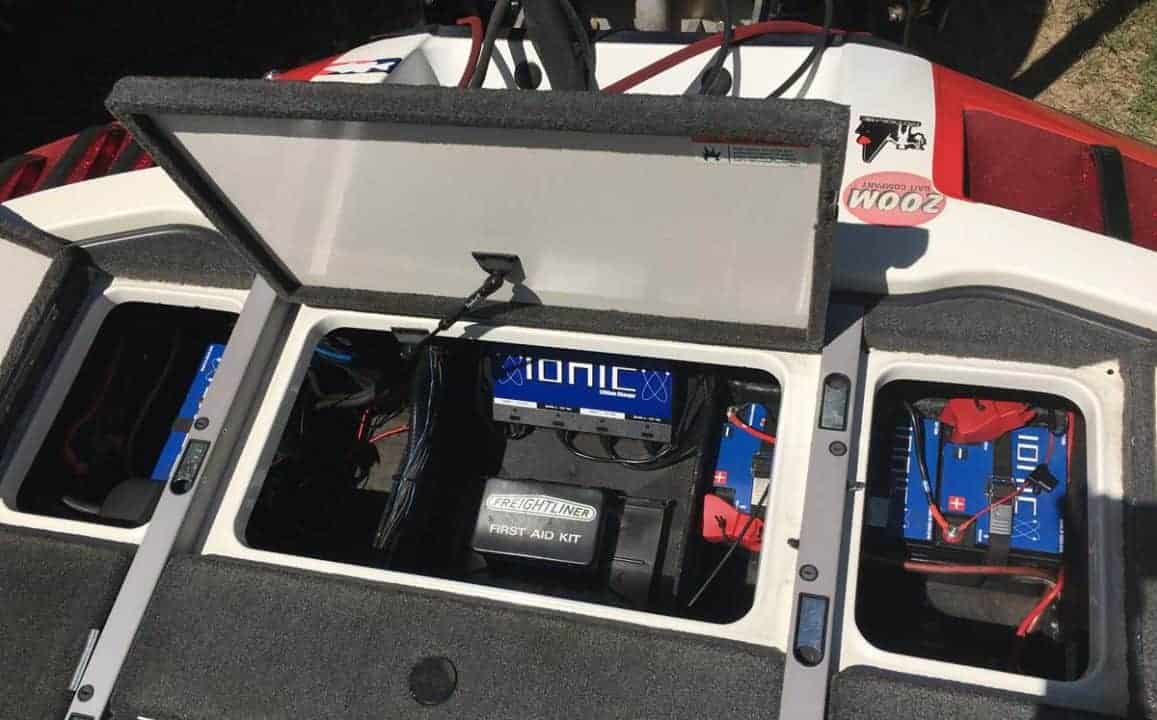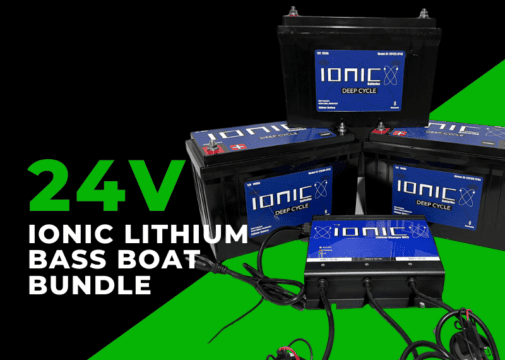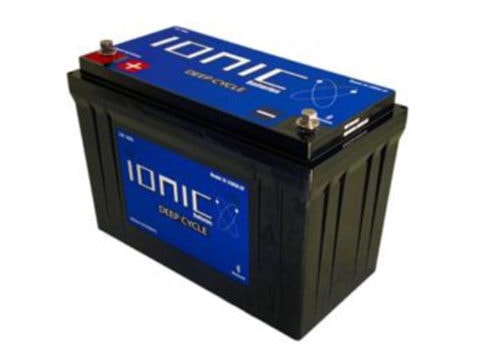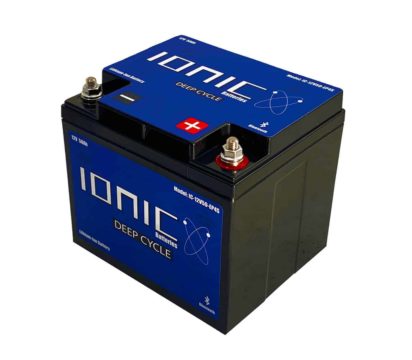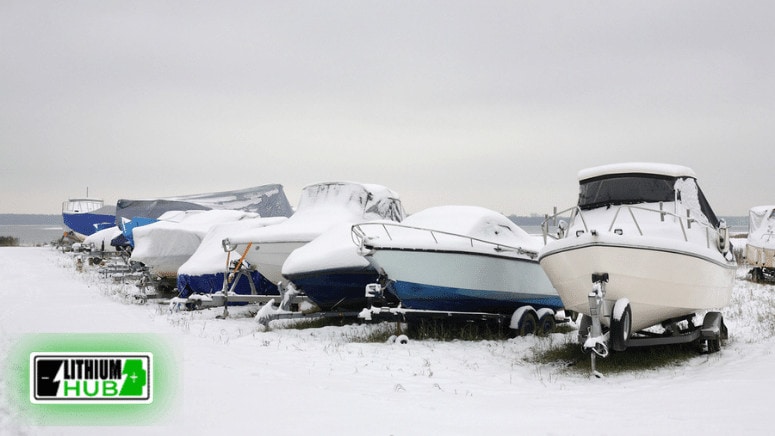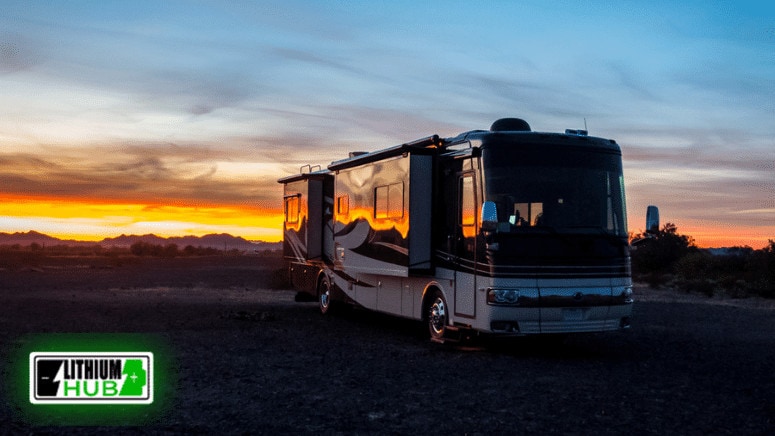What Are The Different Types Of Marine Batteries?
Chemically, there’s basically four types of marine batteries – lithium batteries, gel batteries, AGM batteries (Absorbed Glass Mat), and wet cell. They’re all lead acid except for the lithium batteries. As far as purpose goes, there’s three basic types: starter, deep cycle, and dual purpose. More on that below.
With so many marine battery types on the market, choosing the right one can feel like a dive into the deep end! The last thing you want is to spend money on a battery that doesn’t suit your needs. That’s why we’re here to throw you a line.
Below, we’ll outline the different types of marine batteries. That way, you can feel more prepared before you go battery shopping.
The Three Basic Marine Battery Types
What are the different types of marine batteries? There are three basic types: starter, deep cycle, and dual purpose. Each has a specific job to do.
- Starter battery. This type of marine battery starts your boat’s motor. It’s also called a cranking battery. Starter batteries “crank” out a big dose of power in a short amount of time. But it won’t keep your motor going. That’s a job for the next battery on this list.
- Deep cycle battery. These batteries have thicker plates than starter batteries. These plates allow them to provide steady, consistent power. You can charge them and discharge them for many cycles. They’re perfect for keeping your trolling motor going, and powering your lights, GPS, fish finder, and more.
- Dual purpose marine battery. As its name suggests, this battery can do the job of both starter batteries and deep cycle batteries. But like some “jacks of all trades”, dual purpose batteries have the reputation of being “master of none”. Some won’t provide enough power to start certain engines. Others last for far less cycles than typical deep cycle batteries. The only exception is lithium batteries. Both our 12V 100Ah and 12V 125Ah batteries are both dual purpose!
If you have a trolling motor, you’ll need both a starter battery and a deep cycle battery for your boat. It might be tempting to purchase a dual purpose battery in order to save space or money. But this is only a good idea if you choose a battery with lithium chemistry.
What’s this “chemistry” we’re talking about? You can divide marine battery types by what they’re made out of. Below, we’ll dive into the most popular marine battery chemistries.
Marine Battery Types By Chemistry
All marine batteries aren’t built alike. The different types of marine batteries consist of different materials. Some materials are superior to others.
Imagine you’ve purchased some batteries at the dollar store for your AC unit’s remote. Those batteries were the cheapest option up front. But what if they cop out on you all of a sudden? You could get stuck in sweltering heat with no AC. And every run to the dollar store to get new batteries is going to add up.
Our point? Better batteries are always more expensive. But they last much longer and function better. So keep that in mind when choosing from the two main marine battery types below:
Lead Acid Marine Batteries
One of the oldest types of marine batteries is lead acid. Its main components are lead plates and acid. Flooded lead acid batteries (FLA), the type you would use on a boat, have a distilled water and sulphuric acid mixture. You have to add water to them every so often.
Lead acid batteries are bulky and heavy–two characteristics you don’t want in a boat battery. We’re talking roughly 80 lbs per battery, and you might need 2 or 3 depending on how much power you need. That’s like an extra person or two! They are also the slowest charging battery on the market.
Two types of lead acid batteries, AGM and gel, offer some improvements. They have a lower self-discharge rate and won’t leak. But they still have a low capacity to size ratio.
So why would anyone choose lead acid with those obvious disadvantages? Because of their cheaper price tag (especially FLA batteries). But their attractive pricing turns ugly when you consider how often you’ll have to replace them. Most lead acid marine batteries only last around 2 to 4 years.
Wondering how long a marine battery should last? Get the answers here!
Ionic Lithium (LiFePO4) Marine Batteries
The other marine battery type is Ionic lithium. It’s a different kind of chemistry altogether: lithium iron phosphate. This combination eliminates the problems that plague lead acid batteries. Lithium batteries are smaller, lighter, long-lasting, and faster charging. You can shed up to 70% battery weight off your boat just by using lithium marine batteries.
With lithium, you also get a safer marine battery that won’t leak. They don’t require any maintenance, leaving you more time for boating and fishing. Boaters will love the fact that they provide the same output at 100% charged as 50% charged. So your trolling motor and gadgets will work as well at the end of the day as they did at the beginning.
Unlike lead acid batteries, you can discharge your lithium batteries past 50% without damaging them. LithiumHub’s batteries come with Bluetooth capabilities that let you see charge status on your smartphone. Not to mention that both our 12V 100Ah and 12V 125Ah lithium deep cycle batteries are dual purpose, so they can be used to start your engine as well as power your lights, fish finder, and much more. They’re the best of both worlds!
Choosing from Marine Battery Types
In closing, we’ll be honest: lithium batteries do have one disadvantage. They’re the priciest of the different types of marine batteries. But that’s just the upfront cost. When you consider how long they last (upwards of 10 years), you’ll save money in the long run.
Our best guess is you’re planning to use your boat for at least ten years. So lithium is a great choice! Ready to find the one that’s right for you? Click to see the different types of marine batteries available through LithiumHub now.
Do you know what size battery you need for your boat? Find out here!

